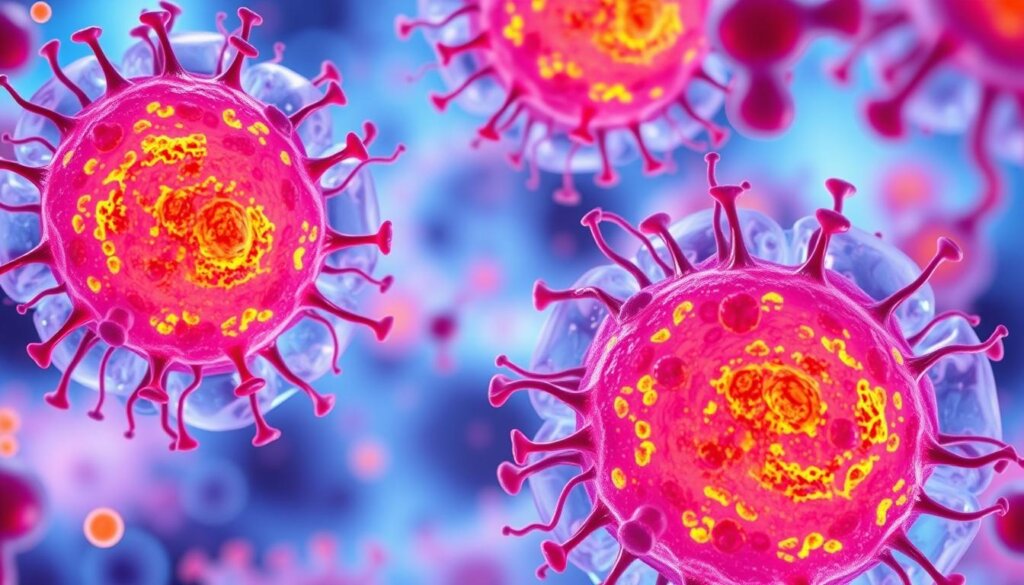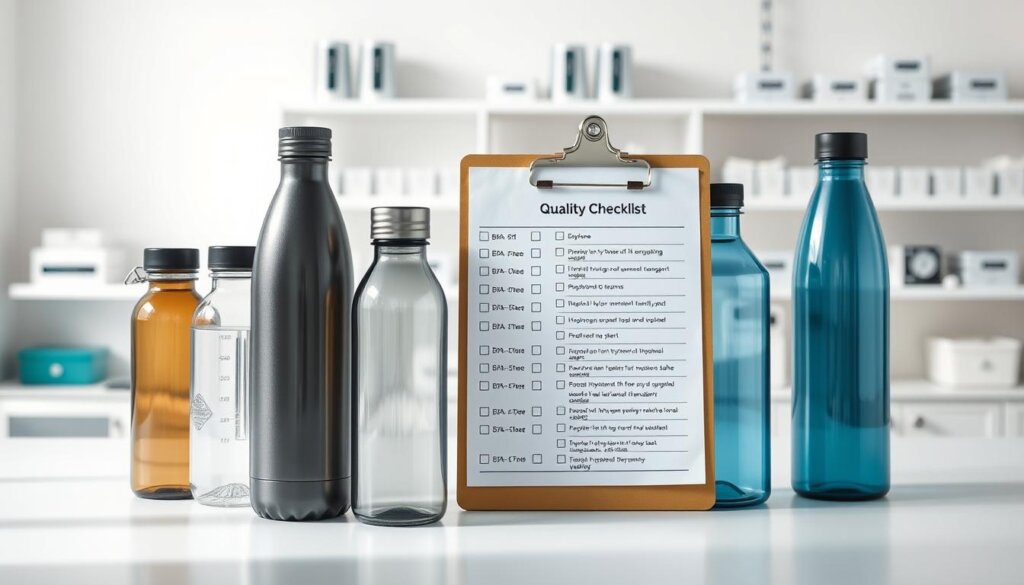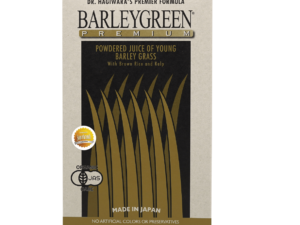Surprising fact: up to 30% of commercially sold cans and pouches lose much of their dissolved gas within a day of opening, so timing matters more than many expect.
Wellness Group greets readers in Malaysia and offers quick support on WhatsApp at +60123822655 during business hours: Monday–Friday 9:30 am–6:30 pm, Saturday–Sunday 10 am–5 pm.
This page answers the top question — is hydrogen water bottle safe — and sums up current research so readers can choose with confidence. It explains what this drink is, how it differs from plain water, and the cautious view science takes on possible health effects.
Readers get quick safety notes like the FDA’s GRAS designation, storage tips to keep dissolved gas longer, and a preview of studies on oxidative stress, metabolic markers, and exercise recovery. The article keeps expectations realistic and shows where findings are mixed.
Key Takeaways
- Products vary in concentration and format; pick non-permeable containers and drink soon after opening.
- Some studies report reduced oxidative stress and better metabolic markers, but not all results agree.
- Use as a supplement to normal hydration, not a replacement for daily fluid intake.
- Costs and formats differ—compare cans, tablets, and home machines by convenience and budget.
- For pregnancy questions, see guidance at this Wellness Group page.
- Contact Wellness Group via WhatsApp for local product help and personalized advice.
Hydrogen Water 101: What It Is and Why It’s Trending
Consumers often wonder how dissolved H2 is put into plain drinking and why it matters. At its core, this product is simply regular water with extra molecular H2 added for potential effects many users seek.
How gas is added to drinking water
Manufacturers add molecular H2 by several methods. Electrolysis devices split molecules to release gas directly into the liquid. Other systems push hydrogen gas under pressure into sealed cans or pouches.
Magnesium-based tablets react to produce H2 on demand. That makes them handy for travel. Home generators and portable units use PEM or other tech to infuse gas repeatedly.
Hydrogen water vs. regular water: what’s actually different
Importantly, water molecules already contain hydrogen tightly bound to oxygen. Adding dissolved H2 does not change those molecules. Instead, it increases free molecular H2 in the liquid that may act differently in the body.
产品 on the market range from single-use cans to rechargeable devices. Non-permeable packaging helps retain gas, since H2 can escape as bubbles once opened. For Malaysians choosing among formats, Wellness Group can help via WhatsApp at +60123822655 or see a related guide on hydrogen water for cleansing.
Is Hydrogen Water Bottle Safe
Current reviews suggest low risk from normal use, though product quality matters.
Current safety status: Generally Recognized as Safe (GRAS)
Regulators list this drink as GRAS and human trials to date report no clear harms from typical intake. Concentrations vary widely across brands, so outcomes depend on how much gas a product holds.
What studies do — and do not — show about risks today
Small clinical trials and basic research explore possible benefits but give mixed results. No official daily intake exists, though many trials used roughly 600 ml to 2 liters per day without reporting adverse events.
- Safety summary: generally recognized as GRAS with no specific harms found for normal use.
- Product variability: concentration differs by device and packaging, so effects will vary.
- Practical tips: choose non-permeable containers and drink soon after preparation to reduce gas loss.
- Tech note: PEM generators produce neutral molecular gas rather than acidic ions, which may help people with reflux.
- Quality matters: device maintenance and materials affect long-term outcomes and potential material residues.
For personalized safety or if you have health concerns, Malaysians can message Wellness Group on WhatsApp at +60123822655 during business hours.
What the Research Says: Potential Benefits and Limits
Clinical findings show promise in certain groups but inconsistency across populations.

Oxidative stress and antioxidant effects: mixed human data
An eight-week trial in people receiving liver radiotherapy who drank 1.5–2.0 L/day reported lower hydroperoxide and preserved antioxidant activity.
By contrast, a four-week study of healthy adults drinking 600 ml/day found no change in oxidative stress markers. This shows results depend on dose, health status, and duration.
Metabolic syndrome markers: cholesterol and inflammation signals
A 10-week trial in adults with metabolic syndrome who drank about 0.9–1.0 L/day showed lower total and LDL cholesterol, higher HDL, increased antioxidant activity, and reduced TNF-α.
Athletic performance and recovery: lactate and fatigue findings
Athlete studies report mixed effects. Some trials found lower post-exercise blood lactate and less muscle fatigue at 1.5 L/day, while others saw no change versus placebo.
Another trial noted improved sprint power at 2 L/day in cyclists, but consistency across sports and protocols is limited.
Healthy aging and neurological hints: early-stage evidence
Small human signals link telomere-related markers and symptom changes to regular intake, yet larger and longer trials are needed before claiming clear aging or neurological benefits.
- Key takeaways: The oxidative stress picture is mixed; antioxidant activity is plausible but variable.
- In metabolic syndrome, studies suggest better cholesterol and lower inflammation.
- Athletic performance gains appear in some trials but not all.
- Overall, hydrogen water may affect blood biomarkers, yet benefits are not guaranteed.
| Population | Dose | Main Outcome | Duration |
|---|---|---|---|
| Radiotherapy patients | 1.5–2.0 L/day | ↓ hydroperoxide; preserved antioxidant activity | 8 weeks |
| Healthy adults | 600 ml/day | No change in oxidative markers | 4 weeks |
| Metabolic syndrome | 0.9–1.0 L/day | ↓ total & LDL cholesterol; ↑ HDL; ↓ TNF-α | 10 weeks |
For help interpreting study takeaways for personal goals, contact Wellness Group on WhatsApp at +60123822655.
How Hydrogen Water Bottles Work
Knowing the underlying process helps shoppers compare models and set realistic expectations.
Electrolysis and PEM technology explained
Electrolysis splits water molecules into free hydrogen and oxygen through an electric charge. The freed molecular hydrogen dissolves back into the liquid for drinking while oxygen vents away.
PEM membranes keep charged ions separate so the final drink stays neutral. That design helps reduce unwanted byproducts and supports consistent performance.
Hydrogen escape: why timing and containers matter
The tiny hydrogen gas diffuses fast and can leave the vessel after the cap opens. Non-permeable materials and tight seals minimize loss and preserve higher concentrations for more noticeable effects.
Practical note: drink soon after a cycle and follow device upkeep routines. Self-clean modes and regular descaling reduce mineral build-up and help the unit produce reliable dissolved gas over time.
| Feature | Why it matters | Buyer tip |
|---|---|---|
| PEM membrane | Keeps ions out; delivers neutral molecular hydrogen | Pick PEM-based products when possible |
| Non-permeable shell | Reduces gas loss through materials | Choose stainless or thick polymer designs |
| Self-clean/descale | Prevents scale, keeps flow paths clear | Use scheduled maintenance cycles |
Need help comparing models in Malaysia? Wellness Group can guide shoppers on PEM-based devices and upkeep via WhatsApp at +60123822655 during business hours.
Bottles, Tablets, or Pre-Packaged? Choosing a Format
Format choice often shapes real value more than labels do. Buyers should match daily habits, budget, and how fast they plan to drink any prepared serving.
Portable units and home generators
Rechargeable portable units make on-demand hydrogen water and suit commuters. Home generators with PEM tech produce larger volumes for families.
Dissolvable tablets and magnesium methods
Hydrogen tablets fizz to create water infused with gas in minutes. Tablets are travel-friendly and need no power, but check third-party testing for claimed ppm.
Pre-filled cans and pouches: convenience vs cost
Pre-hydrogenated products offer consistent dosing and ease. They add recurring cost and may lose gas after opening, so drink quickly for any antioxidant effects linked to reduced oxidative stress.
- Consider total cost: device, filters, and recurring buys versus per-use cans.
- Timing matters: gas escapes fast; immediate consumption helps deliver expected effects noted in some study serving sizes.
- Quality check: prefer PEM devices and third-party verification when possible.
For format advice that fits Malaysian lifestyles and budgets, contact Wellness Group on WhatsApp at +60123822655 or read more on hydrogen water for hypertension.
Quality and Safety Checklist Before You Buy
Before buying, a quick checklist helps buyers separate solid gear from marketing claims.

Quick review: focus on core tech, verified lab data, and upkeep features. These items affect real-world outcomes and user comfort.
Look for PEM tech and third-party testing
PEM-based devices lower the chance of acidic byproducts by keeping charged ions apart. Ask sellers for lab reports that quantify dissolved H2 and screen for impurities.
Concentration variability and storage concerns
Concentrations vary widely among products. Non-permeable materials help keep dissolved gas longer, so plan to drink soon after opening or generation.
Avoiding excessive acidity and material build-up
Prefer units with clear cleaning guidance and self-clean or descaling modes to reduce mineral scale from electrolysis. If reflux or sensitivity is a concern, confirm neutral pH claims before purchase.
- Verify PEM tech and lab documentation.
- Choose non-permeable containers and use promptly.
- Confirm self-clean functions and maintenance advice.
- Favor brands that publish data over bold marketing claims; studies suggest design matters as much as theory.
Need help? Wellness Group can review spec sheets or lab reports with Malaysian customers on WhatsApp at +60123822655 during business hours.
Hydrogen Water vs. Regular Hydration Habits
For most Malaysians, steady fluid intake matters more than trendy additives when coping with heat and humidity.
Regular water remains the foundation of good health and daily hydration. Plain drinking water meets most needs for thermoregulation, digestion, and mood.
Hydrogen water is marketed for added benefits such as reduced inflammation, lower oxidative stress, or improved performance. However, studies give mixed findings: some trials report lower lactate or oxidative markers while others show no change versus placebo.
Timing matters. Dissolved gas dissipates quickly, so immediate consumption after preparation or opening preserves any possible effects.
- Keep regular water intake steady; treat hydrogen water as an optional, timed supplement.
- Athletes should trial it during training blocks before important events to judge performance effects.
- Track symptoms and measurable outcomes—one study can suggest benefit but may not replicate for every person.
| Goal | Practical tip | Reason |
|---|---|---|
| Daily hydration | Prioritize plain drinking water throughout the day | Efficient for heat, mood, and basic health |
| Training/recovery | Try a timed serving around workouts and track results | Some studies show reduced lactate or fatigue in specific protocols |
| Stress and wellness | Combine hydration with sleep, nutrition, and stress tools | Most day‑to‑day benefits come from lifestyle basics, not one product |
For Malaysia‑specific planning, contact Wellness Group by WhatsApp at +60123822655 during business hours for a tailored routine that factors in climate, schedule, and personal needs.
Practical Guidance for Malaysia: When, How Much, and Smart Use
Smart timing and moderate servings let Malaysians try potential benefits without sacrificing daily fluids. Follow simple rules around workouts and hot days to match local needs.
When to drink
Drink shortly before exercise so dissolved gas is present during the session. Consider another serving soon after training to support recovery.
How much to use
Many studies used about 600 ml to 2 L per day. Start near those ranges, spread servings across the day, and adjust by comfort and routine.
Smart use tips
- Immediate consumption: prepare or open drinks right before use because the gas diffuses rapidly.
- Track results: monitor perceived fatigue, performance, and simple metrics to see if the product helps.
- Complement, don’t replace: keep total water intake aligned with Malaysia’s climate; treat servings as part of daily fluids.
- Convenience: canned or pouch options work for busy days—open them only when ready to drink.
- Devices and tablets: run a fresh cycle before training or dissolve tablets and sip promptly.
“Some athlete trials showed lower blood lactate or better power when taken before workouts; other trials found no effect.”
Need local advice? Malaysians can message Wellness Group on WhatsApp at +60123822655 for personalised timing and dosing guidance. Business hours: Monday–Friday 9:30 am–6:30 pm, Saturday–Sunday 10 am–5 pm.
Wellness Group’s Local Perspective and How to Reach Us
Local advisors at Wellness Group translate global research into practical routines that fit Malaysian life. They help people match product choices to climate, training, and daily schedules.
Personalized advice for your health goals in Malaysia
Advisors review options such as PEM‑based bottles, at‑home generators, tablets, and pre‑packed pouches or cans. They explain best practices like immediate consumption and non‑permeable storage to preserve any potential effects.
They also interpret what studies suggest about benefits hydrogen water and limitations. That helps set realistic expectations and avoid costly trial‑and‑error.
Contact Wellness Group on WhatsApp
For quick answers, message +60123822655. Business hours: Monday–Friday 9:30 am–6:30 pm; Saturday–Sunday 10 am–5 pm.
- Compare products: side‑by‑side advice on cost, upkeep, and real‑world use.
- Practical routines: step‑by‑step weekday and weekend plans that fit local weather and work patterns.
- Research help: plain summaries of studies that cover potential benefits, effects on markers, and who may benefit most.
- Holistic view: combine guidance with sleep, nutrition, and movement for better health outcomes.
For targeted guidance on cholesterol and related markers, see hydrogen water for cholesterol or message the team for tailored support.
Conclusion
, The collective studies present encouraging leads yet stop short of firm conclusions.
Bottom line: regulators list the drink as GRAS, and trials show mixed signals for oxidative stress, cholesterol, inflammation, blood markers and fatigue. Results vary by dose (many trials used about 600 ml–2 L per day), container, and timing.
Practical use favors PEM generation, non‑permeable packaging, and immediate drinking after preparation. People with chronic disease should add this into a broader health plan rather than rely on it alone.
Next steps: Malaysians can WhatsApp Wellness Group at +60123822655 for product matching, trial advice, and help turning research into a practical routine.
FAQ
Is Hydrogen Water Bottle Safe? Wellness Group Answers
They state that drinking infused water products is generally considered low risk when made and stored properly. Bottles or cans that add molecular gas at safe concentrations and use food-grade materials typically pass basic safety checks. People with implants, active bleeding, or those pregnant should consult a clinician before use.
Hydrogen Water 101: What It Is and Why It’s Trending — How hydrogen gas is added to drinking water?
Makers inject gaseous molecules by bubbling, pressurizing, or using electrolysis systems. Portable generators and pre-filled cans rely on different methods, while dissolvable tablets release gas through a chemical reaction when dropped into liquid.
Hydrogen Water 101: What It Is and Why It’s Trending — Hydrogen water vs. regular water: what’s actually different?
Both provide hydration, but infused products contain extra dissolved gas that may act as an antioxidant in lab studies. Regular tap or bottled fluids lack this added component; the practical health impact for most people remains small based on current human trials.
Is Hydrogen Water Bottle Safe — Current safety status: Generally Recognized as Safe (GRAS)?
Regulatory bodies have not issued broad bans, and manufacturers often cite GRAS assessments for molecular additions. Safety depends on concentration, container purity, and correct use; reputable brands publish third-party testing to confirm levels and absence of contaminants.
Is Hydrogen Water Bottle Safe — What studies do—and do not—show about risks today?
Short-term trials report few adverse events, but long-term safety data are sparse. Existing research focuses on efficacy rather than chronic risks, so long-duration effects remain unclear. Users should follow product instructions and avoid overuse beyond recommended intake.
What the Research Says: Potential Benefits and Limits — Oxidative stress and antioxidant effects: mixed human data?
Laboratory studies show antioxidant activity, and some small human trials report reduced markers of oxidative stress. However, results vary by dose, timing, and population, so broader clinical confirmation is needed before firm claims are made.
What the Research Says: Potential Benefits and Limits — Metabolic syndrome markers: cholesterol and inflammation signals?
Early trials suggest modest improvements in certain cholesterol measures and inflammation markers in people with metabolic risk. Findings are preliminary and typically limited by small sample sizes and short follow-up periods.
What the Research Says: Potential Benefits and Limits — Athletic performance and recovery: lactate and fatigue findings?
Some athletes report reduced post-exercise fatigue and lower lactate in small studies. Effects appear modest and not universal; hydration, training status, and placebo response influence outcomes.
What the Research Says: Potential Benefits and Limits — Healthy aging and neurological hints: early-stage evidence?
Animal models and pilot human studies provide tentative signals for neuroprotection and reduced age-related oxidative damage. These findings remain exploratory and require larger clinical trials to establish meaningful benefits.
How Hydrogen Water Bottles Work — Electrolysis and PEM technology explained?
Portable units use electrolysis cells, often with proton exchange membrane (PEM) layers, to split molecules and concentrate gas into the liquid. Quality devices control current and materials to limit byproducts and maintain safe pH.
How Hydrogen Water Bottles Work — Hydrogen escape: why timing and containers matter?
Dissolved gas disperses quickly, so drinking soon after production preserves concentration. Metal or pressurized containers retain gas longer than open cups; porous lids and heat accelerate loss.
Bottles, Tablets, or Pre-Packaged? Choosing a Format — Portable bottles and at-home generators?
Generators offer convenience and repeated use but vary in build and output. Buyers should check PEM tech, warranty, and independent testing to ensure consistent gas levels and safe materials.
Bottles, Tablets, or Pre-Packaged? Choosing a Format — Dissolvable hydrogen tablets and magnesium-based methods?
Tablets release gas through a chemical reaction, usually using magnesium. They are portable and affordable but can alter taste, pH, and add mineral residue. Follow dosing instructions to avoid excess byproducts.
Bottles, Tablets, or Pre-Packaged? Choosing a Format — Pre-hydrogenated pouches/cans: convenience vs. cost?
Ready-to-drink cans keep gas sealed and provide consistent dosing, but they cost more per serving and may lose potency once opened. They suit occasional use or travel.
Quality and Safety Checklist Before You Buy — Look for PEM tech and third-party testing?
Shoppers should prioritize products with independent lab reports showing dissolved gas concentration, absence of contaminants, and stable pH. PEM or certified electrolysis systems decrease risk of unwanted chemical residues.
Quality and Safety Checklist Before You Buy — Hydrogen concentration variability and storage concerns?
Concentrations vary across devices and formats. Check advertised parts-per-million (ppm) and real-world retention. Store sealed products upright, away from heat, and consume promptly after opening.
Quality and Safety Checklist Before You Buy — Avoiding excessive acidity and material build-up?
Poor-quality electrolysis can shift acidity or leave mineral deposits. Choose food-grade materials, follow cleaning guidance, and avoid extended storage in devices that lack corrosion-resistant components.
Hydrogen Water vs. Regular Hydration Habits
For most people, routine fluid intake from tap, filtered, or bottled sources remains the cornerstone of hydration. Infused options may offer small, situational benefits but should complement—never replace—established hydration and nutrition practices.
Practical Guidance for Malaysia: When, How Much, and Smart Use — When to drink: pre-exercise and immediate consumption?
Studies that report benefits typically have participants consume infused liquids shortly before or after exercise. Immediate consumption preserves gas content, so timing matters for athletes seeking performance or recovery effects.
Practical Guidance for Malaysia: When, How Much, and Smart Use — How much: what studies typically use vs. daily needs?
Trials commonly use 300–2,000 milliliters per session or specific ppm ranges. Daily fluid needs still depend on activity, climate, and body size. Treat infused servings as supplemental to total daily intake rather than a complete replacement.
Wellness Group’s Local Perspective and How to Reach Us — Personalized advice for your health goals in Malaysia?
Wellness Group offers tailored guidance based on medical history and lifestyle. They recommend discussing chronic conditions and medication use before starting any supplemental regimen.
Wellness Group’s Local Perspective and How to Reach Us — Contact Wellness Group on WhatsApp?
A: Reach them at +60123822655. Business hours: Monday-Friday 9:30 am–6:30 pm; Saturday-Sunday 10:00 am–5:00 pm for consultations and product inquiries.






